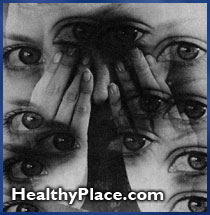The Road to Hell
In this article in the International Journal of Drug Policy, Stanton details the story of American "social hygiene" films - movies shown to teenagers to make them into better people. Including their treatment of drugs and alcohol, these films describe a well-meaning American moralism that is both bereft of reality and, at the same time, stultifies genuine thinking about social problems and their causes.
Prepublication version of article appearing in the International Journal of Drug Policy, 11:245-250, 2000.
© Copyright 2000 Stanton Peele. All rights reserved.
Review of Mental Hygiene: Classroom Films - 1945-1970, by Ken Smith, Blast Books, NY 1999
 Ken Smith was working for The Comedy Channel, excerpting industrial and classroom films for programming laughs, when he became addicted to what he terms "hygiene" movies. These were a few thousand short subjects - 10 minutes in length and called "social guidance" films - created by a small number of specialty studios (mainly in the Midwest) for classroom viewing. Their topics were driving, dating, sex, drugs, hygiene, and - generally - getting along in life and with others. As he screened the films for humorous moments, Smith became aware that they shared distinctive themes and techniques. Smith came to see the genre as "a uniquely American experiment in social engineering." Although today we find the themes ultraconservative, in fact the filmmakers represented a liberal-thinking progressive streak of American striving for self-betterment.
Ken Smith was working for The Comedy Channel, excerpting industrial and classroom films for programming laughs, when he became addicted to what he terms "hygiene" movies. These were a few thousand short subjects - 10 minutes in length and called "social guidance" films - created by a small number of specialty studios (mainly in the Midwest) for classroom viewing. Their topics were driving, dating, sex, drugs, hygiene, and - generally - getting along in life and with others. As he screened the films for humorous moments, Smith became aware that they shared distinctive themes and techniques. Smith came to see the genre as "a uniquely American experiment in social engineering." Although today we find the themes ultraconservative, in fact the filmmakers represented a liberal-thinking progressive streak of American striving for self-betterment.
Begun after World War II - when young people, freed from the depression and the War, were creating their own culture - the films educated adolescents about "correct" behavior, including good grooming, manners, and citizenship. The films grew from war time "attitude-building" works (some produced by leading Hollywood directors) meant to inspire both military personnel and those on the home front. For young people in the late 1940s and the 1950s, the chief message was to fit in. The films disdained independence and bohemianism, or looking or acting different in any way. That someone might simply not fit the mold of well-groomed, attractive adolescent (not to mention that someone would reject this image!) was simply not conceivable. Teens who were not able to fit in were portrayed as frankly deviant and deeply troubled, often ending up in tears or worse.
With boys, the message was to avoid delinquency and impulsive and dangerous behavior, to practice good manners, and to achieve. For girls, the message was to get a man; films told teenage girls to downplay their intelligence and independent thinking in order to curry dates and eventual marriage. Today, The Way to a Man's Heart (1945) and More Dates for Kay (1952) would be shown as object examples of the oppression of women. But, while the girl in More Dates for Kay throws herself at every man she meets, she was of course not to let her desperation push her into offering sexual favors. The 1947 Coronet film, Are You Popular, made clear "Girls who park in cars are not really popular." Thus, the industry periodical Educational Screen recommended More Dates along with How to Say No and Shy Guy for church youth meetings.
Progressing from the late 1940s through the 1950s and into the 1960s, the films encountered a difficult social reality as they encouraged conformity. As Smith describes this paradox in terms of the film Shy Guy (1947) - which featured a young Dick York, who went on to television fame as the straight-edged husband and foil in Bewitched - "what makes school kids popular with each other is often not what makes school kids popular with moms and dads." In the film, a dad who very much resembles the father in the TV series Leave It to Beaver helps his nerdy son to fit in. After the York character gains popularity by fixing the gang's record player, the narrator intones, "He's not really different."
Smith points out that conformity was encouraged as a political and social tranquilizer at a time when segregation was still law in many states. Today many could question the goal expressed in Manners at School (1956), "If we mind our own business, people will like us better." A number of films explored democracy, including a few red scare films. The most famous of these, Duck and Cover (which described how to avoid nuclear holocaust by ducking under school desks and covering up with whatever is convenient - including newspapers and blankets) achieved a second life in the 1982 documentary, The Atomic Café. Duck and Cover (which was produced on contract for the Federal Civil Defense Administration in 1951) portrayed scenes of everyday life being interrupted by blinding flashes and atomic mushrooms. Even if young viewers were unaware of radioactive fallout and the scorching heat that slaughtered those near ground zero at Hiroshima, the film seemed more likely to produce nightmares than to reassure.
While many of the films were unremittingly upbeat, a strong sadistic streak pervades others. That is, suspecting young people of the worst, the films warn of dire consequences for those who step out of line. Perhaps the strangest example of a scare film is the hard-to-catalogue What's on Your Mind, produced for the National Film Board of Canada in 1946. Smith summarizes the film's content:
"This man is a catatonic schizophrenic," says the film's bombastic narrator, Lorne Greene, as an obviously staged scene shows a guy in black leotards, his eyes turned upwards, wondering around a tile-lined room. "In a world changing overnight, men long to escape the fear of atomic destruction, of everyday living!"
In rapid succession the film cuts to a car running over a pedestrian, a distraught family waiting in line for postwar housing, a riot between union strikers and police, and a woman throwing herself off a bridge. "For some the urge to escape grows so extreme, they make the final exit."
This film had no obvious purpose or resolution - it seems mainly a tribute to uncontrolled paranoia, if not by viewers, then by the film's producers. Indeed, a number of films just warned children about environmental dangers - some of which seem quite farfetched. Their titles are indicative: Let's Play Safe (1947), Why Take Chances? (1952), and Safe Living at School (1948). The latter film emphasizes the necessity that drinking fountains have "no sharp parts" and "are safely constructed to reduce the danger of bumping your teeth while drinking." And how many women die from falls from a kitchen chair, as described in Doorway to Death (1949)?
But most scare films clearly depicted the observed catastrophes as the direct results of misbehavior. One whole subgenre of this kind of film is the highway safety film (within this subgenre were an entire group of drunk-driving films). Indeed, such films are still produced and screened in driver education classes (I saw one when, a bit past my teenage years, I accumulated too many points on my driver's license). Whereas these films had something of an educational bent previously, the advent of large-scale teenage driving by the 1950s hyped up the genre, which could now more accurately be labeled "highway accident" films. The first of these was evocatively titled, Last Date (1950), and contained the haunting line, "My face, my face!" The film was promoted with the teaser, "What is Teen-a-cide?"
In 1958, the genre transmogrified into highway gore, when Safety or Slaughter (1958 - perhaps readers at this point think Smith is making these titles up) showed actual highway carnage: "That man is a statistic. So is that girl." Some classics in this mode were Mechanized Death (1961), which opened with a dying woman hacking up blood as troopers pried her from a wreck, and Highways of Agony (1969), which first artfully showed a desolate shoe before focussing on dead bodies on asphalt. Just as great films are remade or updated over the years, The Last Prom appeared in 1972, and a staged shot of an attractive young woman in a prom dress screaming behind breaking glass is mixed with shots of bleeding bodies of girls. Highway police loved these films (which is why I got to see one as an adult), and began carrying cameras to contribute footage to the filmmakers.
Pain and death were the result of wild teen driving, and of much else that adolescents might be tempted to do. Among the categories of cautionary tales were those about sex. Post-War parents assumed that children, given freedom and independence, would constantly be tempted by sex. As Smith admits, "These were not irrational concerns." The first line of defense was to avoid sex, or to avoid getting seriously involved. Thus, films entitled Are You Ready for Marriage? (1950) and Worth Waiting For (1962) emphasized the heavy burden of the ultimate commitment. Some films emphasized the shame and social opprobrium of pregnancy. But sex education films seemed especially preoccupied with syphilis and - in the shock style that evolved - lesions, microscopic shots of bacteria, and deformed babies became staples in sixties films. Dance, Little Children (1961), made by the Kansas State Board of Health, showed syphilis as the sequelae for an adolescent girl who innocently enough wanted to go to a dance.
The extremity of these films seems to be testimony to their ineffectiveness - it was as though the ante had to be upped since children were disregarding them. Smith correlates this with the emergent rebelliousness of the 1960s. The man best positioned to capture this mood - and the recipient of Smith's vote for the archetypal social guidance filmmaker - was Sid Davis, who began his career as a stand-in for John Wayne. Davis got funding for his first film from Wayne - Dangerous Stranger (1950), a film based on a favorite topic of Davis's, child molesting. Davis returned to this topic repeatedly in his 150+ film career, claiming his own daughter made him sensitive to the issue (Davis's daughter appeared in a number of his films). Davis combined a rock solid commitment to mainstream values with an unflinching willingness to explore the dark side. Thus, Davis made Boys Beware (1961), the only social hygiene film to feature the topic of homosexuals who pick up and seduce adolescent boys: "What Jimmy didn't know was that Ralph was sick. A sickness that was not visible like smallpox, but no less dangerous and contagious. You see, Ralph was a homosexual."
Davis brings out Smith's best writing, as in his description of The Dropout (1962), the story of a boy, Robert, who doesn't feel he needs to complete high school:
The Dropout is Sid Davis at his most relentless. . . . Like teenagers in many Sid Davis teen films, Robert has made a fatal error - he thinks he can Break the Rules. This film will serve as his river of destiny, carrying him irrevocably downstream to his doom. . . . Robert, not yet realizing that he's trapped in a Sid Davis universe, visits an unemployment agency. . . . The film ends as Robert apathetically watches one of his new buddies being dragged out of a pool hall by the police. . . . [followed by] Zoom in on the eight ball. Fade to black.
Davis's films, while intense, suffered from poor production values, as Davis skimped on costs (particularly actors' salaries), and tried to cram too many themes into the ten-minute format. Frequently, the narrator in his films worked overtime breathlessly "enunciating every self-satisfied condemnation."
Of course, the story of the descent into perdition favored by Davis and other of his compatriots in mental hygiene films is the temperance tale. Alcohol, aside from drinking-driving films, was not actually a much featured topic - since, through the time the films were made, alcohol was well accepted in the U.S. (Betty Ford had not yet come forward, leading to the boom in alcoholism treatment and, eventually, a new temperance signaled by a decline in alcohol consumption beginning in 1980.) Davis did produce Alcohol is Dynamite (1967), a reminder of the "fatal glass of beer" straight from the nineteenth century. Two boys, trying to buy some alcohol, encounter a sports writer who instead tells them about three other boys who began drinking. Although in the flashback the drinkers immediately double up in pain and become zombies after their first swig, they resume drinking as soon as they regain consciousness. The narrator of their fates tells how one of the boys ended up on skid row, the other joined Alcoholics Anonymous, and the third vowed never to drink again - which he didn't. "How do I know?" the narrator asks rhetorically. It turns out that boy was his son.
Nothing shows better that mental hygiene films were not educational efforts, but moral fables, than educational movies on drugs. However, like films about menstruation, the principal producers refused to touch the topic, leaving production to independents who specialized in drug films. The earliest of these films, Drug Addiction (1951), showed the results for Marty of smoking marijuana. Stoned, he drinks from a broken Pepsi bottle and cuts his mouth to ribbons. Directly after smoking marijuana, Marty buys heroin from a local drug dealer, and proceeds straight downhill. Marty then enters a countrified rehab center where he farms and plays baseball, and soon recovers.
The focus on heroin was typical of these early films - drug use was not common among young Americans, and the idea proposed was that any drug use led virtually instantaneously to heroin addiction. Young people progressed from marijuana, to heroin, and to sobriety in a matter of weeks in The Terrible Truth and H: The Story of a Teen-Age Drug Addict (both made in 1951). Urban-centered films such as Narcotics (1951) and Monkey on the Back (1955) were among the few mental hygiene films in which African Americans ever appeared. By the 1960s, youthful drug use had become an actual concern for Americans, and drug films became a staple of the social guidance field. Nonetheless, marijuana was still shown inevitably to produce immediate mental deterioration and to lead inevitably to use of narcotics or LSD. In the 1967 version of Narcotics: Pit of Despair, the protagonist laughs maniacally after one puff of marijuana. As in earlier films, excruciating withdrawal is depicted, but then the young man is sent to a hospital where "the very best treatment modern science can give" is available.
Every cliché about drugs that you have heard has been memorialized in one of these drugs films - yes, LSD users stare at the sun until they go blind in the officially-titled LSD-25 (1967). Flashbacks are documented in Trip to Where (1968) and Curious Alice (1969). Marijuana (1968) was narrated by Sonny Bono, whom Smith reports "looks and sounds as if he were stoned." The pot smoker in this film stares at himself in a mirror - "until his face is replaced by a rubber monster mask!" Of course, while claiming to educate, these films imitated the drug exploitation films of the 1960s (like Roger Corman's 1967 The Trip), Hollywood films about narcotics use (like Otto Preminger's 1955 The Man with the Golden Arm), and the most famous drug film of all, the 1930s' Reefer Madness. The filmmakers simply could not ween themselves from their moral crusades no matter how scientific-seeming the film was purported to be - in Drugs and the Nervous System (made in 1972, the most recent film included in this book), LSD users run into traffic because they "believe they are God." Indeed, it is their growing isolation from reality that, in Smith's view, drove the standard mental hygiene film into extinction, replaced by more open-ended, 1970s "discussion" films.
Whereas, Smith feels, "In the late 1940s and early 1950s, when kids wanted to conform, they [mental hygiene films] were effective. In the late 1960s, when kids didn't, they were not." Even the irrepressible Sid Davis was moved to simulate greater reality in Keep Off the Grass (1970). In this film, mom finds a reefer in Tom's room. Tom's dad lectures him, "prolonged use may result in a loss of ambition. . . ." [the ultimate downer in Davis world]. Tom learns from several cops that, "Not every pot smoker goes on to heroin, of course. A personality factor is undoubtedly largely responsible for that step." But, then, Davis could not resist then speculating, "Very likely the same personality factor which turned the user onto pot!" As we can see, Davis could not remove the blinders of the genre.
Yet, we may inquire how much American educational films and public health messages have changed since the heyday of the social guidance movie. AIDS is even superior to syphilis for warning adolescents to avoid sex, even though it is virtually impossible that an adolescent will contract the HIV virus in sexual intercourse with another non-drug-injecting teenager. The Center on Addiction and Substance Abuse (CASA) - whose president Joseph A. Califano, Jr. is former Secretary of the U.S. Department of Health, Education, and Welfare - has recently repopularized the "progression" model of drug use depicted in these films with the "gateway" model. Califano and his colleagues point out that heroin addicts nearly all began their drug-use careers by smoking marijuana and cigarettes and drinking alcohol (although microscopically few alcohol or marijuana users become heroin addicts). In a fraction of the 10 minutes required for a mental hygiene film, ads by the Partnership for a Drug Free America present the identical picture of the consequences of drug experimentation.
In fact, the lesson of the mental hygiene film seems to be that American moralism about personal behavior is inextinguishable. Media messages convey the same inexorable progression from pleasure to perdition that American blue-stockings have always maintained - a message largely absent when Europeans deal with drugs, alcohol, and sex. Likewise, the obsessiveness and fear-based nature of public health education, and of the American view of the world, still seems to be a distinctive characteristic of the American psyche.
In any case, I can't wait for the film version of Mental Hygiene.
next: What Do I Do when I Find an Adoptive Baby has Special Problems Possibly Related to Her Mother's Drug Use?
~ all Stanton Peele articles
~ addictions library articles
~ all addictions articles
APA Reference
Staff, H.
(2008, December 29). The Road to Hell, HealthyPlace. Retrieved
on 2025, November 9 from https://www.healthyplace.com/addictions/articles/the-road-to-hell
 Become more than you are!
Become more than you are! If you want to
If you want to  I am not an expert on Clonidine-managed withdrawal. If you read my site, you will see that I view withdrawal as highly situationally and psychologically determined. In this view, it would certainly be possible to encounter withdrawal symptoms from only a small maintenance dose of a narcotic, and this happens. "Addicts" report withdrawal with often quite minimal exposure to narcotics. On the other hand, withdrawal has often been overcome readily through social milieu therapy (being in a rich, involving environment where anticipation of withdrawal is minimized because the focus is elsewhere).
I am not an expert on Clonidine-managed withdrawal. If you read my site, you will see that I view withdrawal as highly situationally and psychologically determined. In this view, it would certainly be possible to encounter withdrawal symptoms from only a small maintenance dose of a narcotic, and this happens. "Addicts" report withdrawal with often quite minimal exposure to narcotics. On the other hand, withdrawal has often been overcome readily through social milieu therapy (being in a rich, involving environment where anticipation of withdrawal is minimized because the focus is elsewhere).

 Depressive disorders affect approximately 19 million American adults. The suffering endured by people with depression and the lives lost to suicide attest to the great burden of this disorder on individuals, families, and society. Improved recognition, treatment, and prevention of depression are critical public health priorities. The National Institute of Mental Health (NIMH), the world's leading mental health biomedical organization, conducts and supports research on the causes, diagnosis and treatment of depression and the prevention of depression.
Depressive disorders affect approximately 19 million American adults. The suffering endured by people with depression and the lives lost to suicide attest to the great burden of this disorder on individuals, families, and society. Improved recognition, treatment, and prevention of depression are critical public health priorities. The National Institute of Mental Health (NIMH), the world's leading mental health biomedical organization, conducts and supports research on the causes, diagnosis and treatment of depression and the prevention of depression.